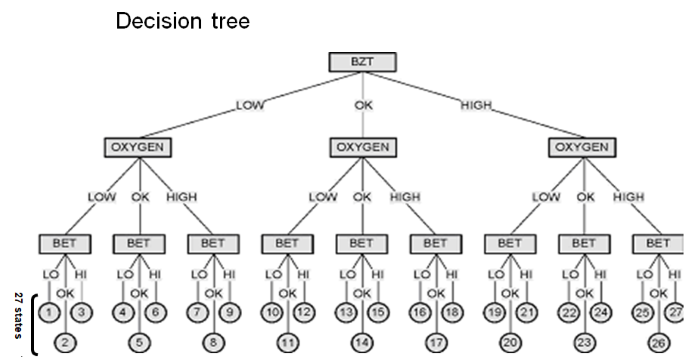Computational tools
Related Videos
KILN UPSET CONDITIONS AND SUPPORT SERVICES
KILN UPSET CONDITIONS AND SUPPORT SERVICES
2020-10-31 12:37:56Introduction
Nowsaday, Kiln operation problems frequently occur, causing many difficulties for Cement plants. Understanding that, Cost Solutions will help the Plants come up with methods to solve these problems perfectly (root cause problem solving), by using advanced and modern technology and a team of experienced engineers. We are committed to ensuring efficiency and satisfaction for customers at the most competitive prices and optimal costs.
1. Objectives of kiln operation:
- Protection of equipment and personnel
- Production of consistent clinker quality
- Smooth and stable process operation
- Maximum thermal efficiency
- Maximum production rate
2. Control Parameters (BZT)
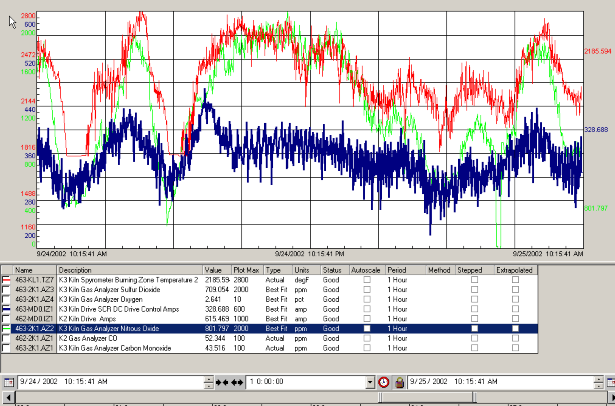
3. Control Variables
Control variables of a kiln system:
- Fuel rate to kiln
- Material feed rate to kiln
- Kiln draft (ID fan speed or damper position)
- Kiln speed
Control variables of a precalciner system:
- Fuel rate to precalciner
- Precalciner draft (ID fan speed or damper position / tertiary air damper or kiln orifice)
4. Control Parameters and Variable
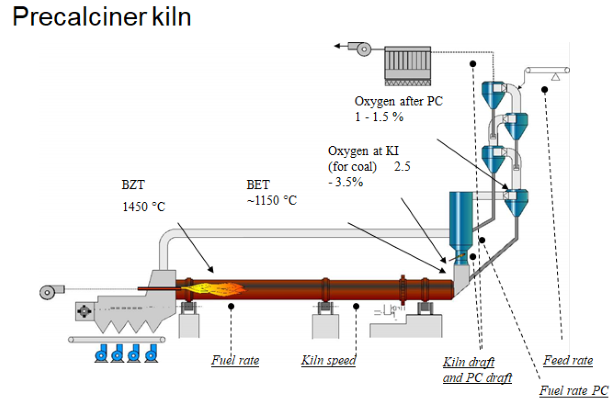
5. Objective of Kiln Control
The objective is to maintain a stable kiln system, i.e. close to case 14, which is:
BZT O.K.
BET O.K.
Oxygen O.K.
6. Upset Conditions
Upset conditions are abnormal process conditions which disturb kiln operation and lead to loss of production
The most common upset conditions are:
i. Ring fall
ii. Coating fall
iii. Hot meal flush
iv. Red spot on the kiln shell
v. Cyclone blockage
vi. Ball formation
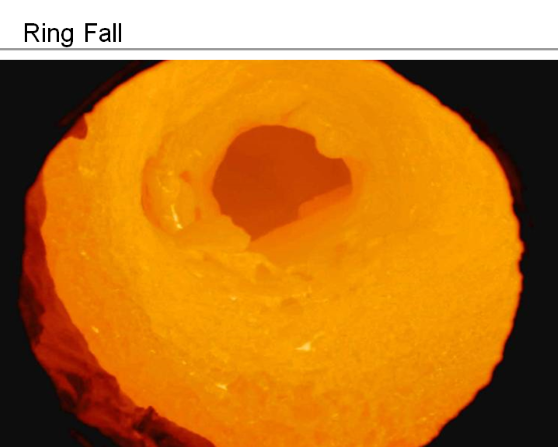
- Detection:
Clinker ring: sharp increase of the grate cooler chamber pressures, increase in secondary air temperature, smooth drop of the kiln amps, drop in the kiln inlet pressure.
Sinter, ash and middle ring: cooling of burning zone, smooth drop in the kiln amps and possible drop in the kiln inlet pressure.
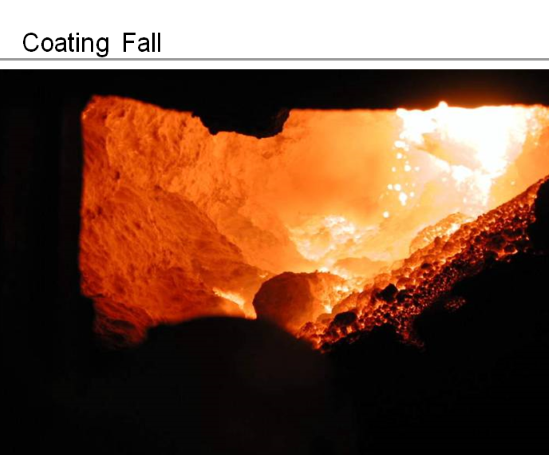
- Detection:
Sharp increase and widening of amplitude in the kiln amps (if coating breaks out uneven), increase in the grate cooler chamber pressures.
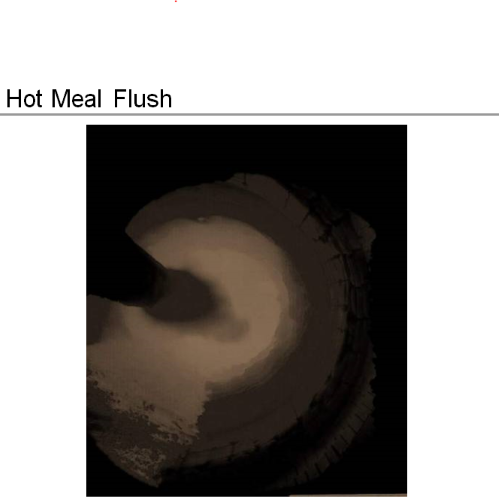
- Detection:
Drastic drop in the BZT, hot meal enters the cooler, kiln becomes dark, flame hardly visible
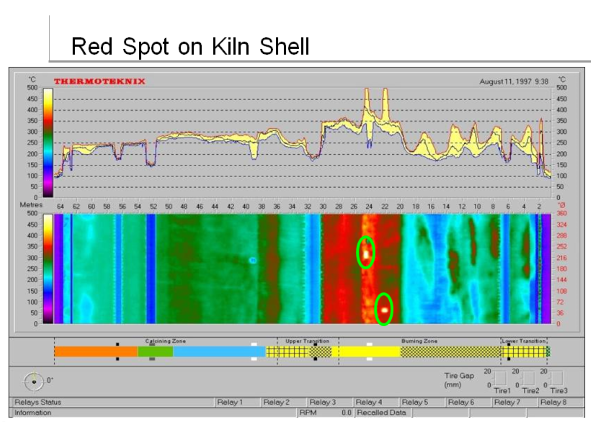
- Detection:
Red shining spot is visible, alarm of kiln shell scanner
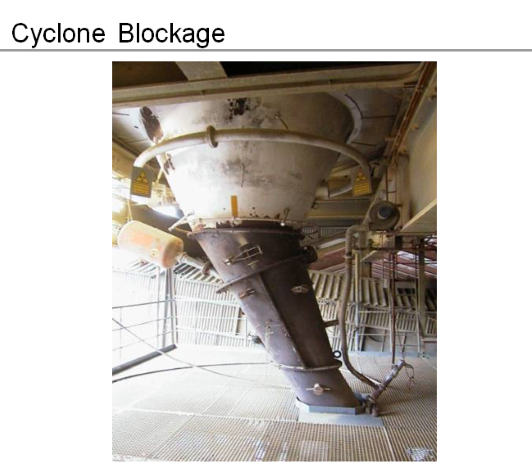
- Detection:
Pressure decrease, measured in the cone of the cyclone (quickest response)
Radiation Detector
Ball formation
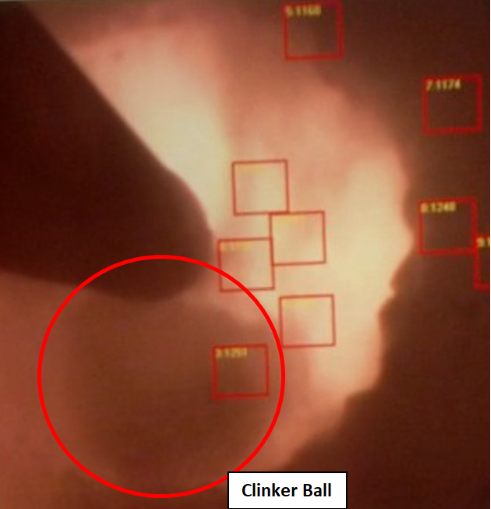
- Detection:
Impact of clinker balls
Excessive clinker temperatures at cooler outlet
Cooler operation (blockages)
Clinker ball formation occurred on several occasions and caused clinker cooler and kiln stoppages.
Articles
- PROVIDING THE KILN OUTLET SEALS (30.10.2020)
- PROVIDING THE KILN INLET SEALS (30.10.2020)
- PROVIDING AIR BLOWER FOR INDUSTRIES (07.02.2020)
- SUPPLY FABRIC FILTERS FOR INDUSTRIES (14.11.2019)
- PROVIDING AIR BLASTER FOR INDUSTRIES (11.11.2019)
- (09.11.2019)




